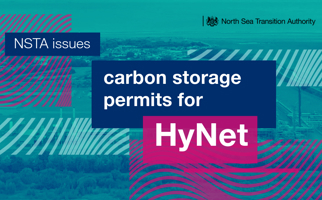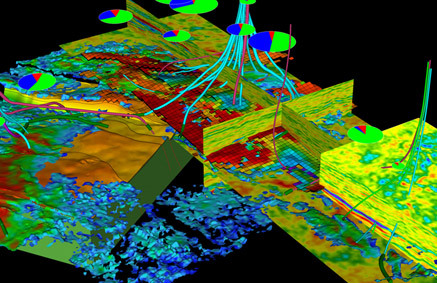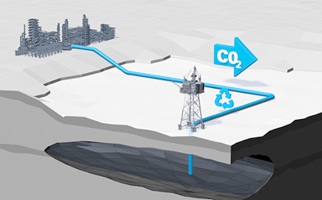
Seismic acquisition, processing, and modelling remain key areas of Operators’ technology spend.
In a mature basin like the UKCS, there is a need for high quality seismic data and interpretation products to identify and de-risk more complex exploration targets. i.e. the easy targets have gone but new technology can de-risk previously disregarded leads and prospects and identify new targets in areas of complex geometries e.g. salt, volcanic provinces
We are expecting increased seismic acquisition for CCS purposes due to Licence Round awards, and requirement for modern 3D seismic baselines prior to first injection. Processing and imaging to elucidate intervals not previously a focus for O&G (in SNS modelling for CS). Requires update/development of existing and new software to handle CO2 as a fluid for effective modelling of its behaviour in the reservoir.
The latest software includes applications of machine learning so they can more rapidly interpret the very large volumes of data in a mature basin like the UKCS and aid with the interpretation of very complex geophysical signatures.
Seismic & Exploration technologies
- Operators’ technology focus is increasingly on subsurface modelling and reprocessing to increase value from acquired data to drive time and cost efficiencies
- Increasing interest in seismic & exploration technologies is concentrated within a subset of Operators aligned to basin strategies and opportunities, which includes carbon storage this year
- 5 Operators carry at least 5 exploration technologies in their current plans, with 21 operators reporting technologies in this category
In common with other technology areas, Operators focus primarily on deployable technologies, i.e. in Early Commercialisation or Proven stages
However, more than in other areas, Operators participate directly in the development or adaptation of over 50% of the Exploration technologies in their Plans
Readiness definitions: Early Development (TRL 1-4), Late Development/Pilot (TRL 5-7), Early commercialisation (TRL 8), Proven (TRL 9)
Fewer operators reporting high-definition broadband or OBN acquisition this year as these have become business as usual. Focus remains on continuously improving acquisition approaches (sampling density, frequency spectrum) resulting in enhanced imaging such as deeper imaging or fracture visualisation. Advances in newer technologies such as DAS VSP continues along with ongoing efforts in cost reductions of acquiring time-lapse 4D seismic surveys. Autonomous node technology could potentially reduce cost and acquire data in spatially constrained environments. New this year - Operators looking at carbon storage potential with 4D seismic acquisition and seabed 4D gravity monitoring
- 4D seismic acquisition - Address the potential for imperfect reservoir sweep in a potentially complexly-connected reservoir. 4D acquisition and processing in thin injectite sand bodies subject to water sweep
- TRL 9 Commercially available
- TRL 9 Commercially available
- Multi-azimuth seismic acquisition – Acquire survey for multi-azimuth and high-angle illumination of injectite play. Primary tool used for locating infill drilling targets.
- TRL 9 Commercially available
- TRL 9 Commercially available
- OBN Acquisition - Ocean bottom nodes for improved seismic acquisition
- TRL 9 Commercially available
- TRL 9 Commercially available
- Seabed 4D gravity monitoring - Undertaking modelling of seabed gravity sensing survey technology over carbon storage sites
- TRL 9 Commercially available
- TRL 9 Commercially available
- Autonomous Nodes - Pilot for the use of Autonomous nodes (AUV+nodes) to deploy/recover seismic nodes on the seabed without use of ROV or cables.
- TRL 8 Early Commercialisation
- TRL 8 Early Commercialisation
- DAS VSP - This is part of a field trial for utilising “Borehole DFO” for seismic surveillance on an asset and is a first for Operator. DAS VSP technology may help to augment the future 4D seismic programme through the provision of low cost, localised and on demand seismic surveillance.
- TRL 8 (Early Commercialisation)
- TRL 8 (Early Commercialisation)
- Marine Vibrator - Marine Vibrator Pilot - Technology reduces acoustic impact on marine life
- TRL 8 (Early Commercialisation)
- Seabed digital acoustic sensing (S-DAS) - NZTC sponsored to model use of S-DAS over carbon storage sites
- TRL 5-7 Late Development/Pilot
Continued focus on extracting maximum value from existing data. Significant advances in reprocessing techniques in recent years, with focus and spend on reprocessing of existing datasets. Reprocessing of legacy 3D seismic surveys with modern techniques. Operators now looking at carbon storage potential
- Diffraction Imaging and Vertical Image Projection - Seismic processing technique to better image sand injectites not observed by conventional processing.
- TRL 9 Commercially available
- TRL 9 Commercially available
- Extended Elastic Impedance Modelling - Extended Elastic Impedance modelling. Use advanced analysis techniques to evaluate distribution of best pay within proximal turbidite fans and evaluate potential well opportunities.
- TRL 9 Commercially available
- TRL 9 Commercially available
- Inversion Software - Proprietary inversion Software using Proprietary 2018 reprocessed 3D seismic data to better delineate the reservoir facies distribution across the field and improve Prospect evaluation in the assets area.
- TRL 9 Commercially available
- Seismic velocity model update - Best-in-class Seismic Full Wave Inversion velocity model update to deliver improved depth conversion accuracy and estimate uncertainty.
- TRL 8 Early commercialisation
- Inversion - Quantitative seismic AVO inversion. Convert seismic data from amplitude at an interface to layer properties, calibrated by well log
- TRL 8 Early Commercialisation
- Advanced Seismic Interpretation Tools - New generation algorithm. Improves speed and quality of auto-tracking of seismic horizons.
- TRL 4-7 Late Development/Pilot
Subsurface modelling continues to show an increasing number of new technologies being adopted on a greater number of assets. Operator focus is on technologies using AI and machine learning, and advanced analytical methods of improving knowledge of reservoir geology and previously hidden volumes. New this year are Depo Gridding, Flow unit modelling and Reservoir, G&G and well modelling . Emerging are sub-surface storage assessment for CO2 and impurity impact on CO2 streams
- Reservoir, G&G and well modelling - Dynamic modelling and simulation is carried out at geological scale, with interactive results analysis and the ability to change model configurations on the fly.
- TRL 9 Commercially available
- Chemostrat data science project with Earth Science Analytics - Machine learning chemostratigraphic predictions to generate a better understanding of stratigraphy.
- TRL 9 Commercially available
- Depo Gridding - Trial using unstructured depogrids which can honour complex geological structures and layering more accurately than standard geocellular models and can be used in a next generation simulator.
- TRL 9 Commercially available
- 4D modelling - software for subsurface reservoir management visualisation and integration - Integration and Interrogation of all available data (seismic, well, modelling 2D/3D/4D),
- TRL 9 Commercially available
CoViz 4D makes it possible for multi-disciplinary asset teams to simultaneously view and interrogate all available data from seismic to simulation, regardless of the original data source. CoViz 4D allows users to visualize and understand how development decisions affect the reservoir throughout the history of a field.
Technology example link
- Implementation of flow unit modelling (e-facies) using machine learning for static modelling workflow. Capturing discrete flow units within the reservoir zone and modelling them within a depositional model, rather than using traditional facies-based workflows
- TRL 8 Early Commercialisation
- Geological Outcrop Database - SAFARI - Sedimentary Architecture of Field Analogues for Reservoir Information. Consortium project in conjunction with Aberdeen University collating quantitative analogue data for reservoir modelling purposes
- TRL 5-7 Late Development/Pilot
- TRL 5-7 Late Development/Pilot
- Impurity impact on CO2 stream - Presence of impurities in CO2 streams and their impact on CO2 phase behaviour and temperature conditions is not well understood . Special analysis of CO2 compositions and the chemical reactions between different impurities under different conditions in the T&S system will allow a better understanding of anticipated CO2 phase behaviour.
- TRL 1-4 Early Development
- TRL 1-4 Early Development
- Subsurface CO2 Storage Assessment - Subsurface modelling with potential for new data acquisition and processing to allow modelling of CO2 injectivity, migration within the reservoir and containment of the CO2 subsurface. Understand the risk from CO2 storage in depleted reservoirs and critically, the assurance of the containment within the reservoir and include assessment and impact of P&Ad wells in the existing reservoir.
- TRL 1-4 Early Development








